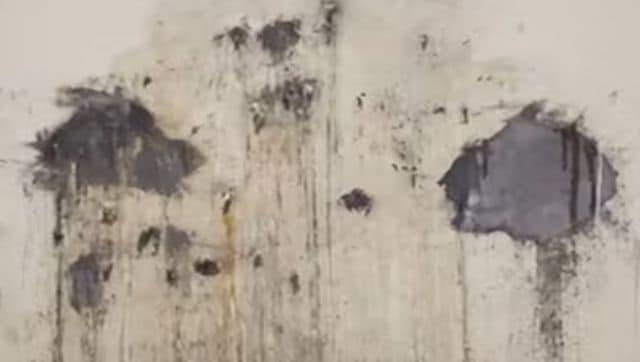Two months ago, in March, amid much hype and hoopla, India’s first undersea tunnel, which is part of the Mumbai Coastal Road was inaugurated by Maharashtra chief minister Eknath Shinde along with deputy chief ministers Devendra Fadnavis and Ajit Pawar.
However, two months on, the hype has fizzled out as news emerged that the tunnel is showing evidence of seepage. The seepage has triggered concerns ahead of the monsoon season. And on social media, people questioned and mocked the quality of the construction.
What has exactly happened? Why is the new construction leaking? How have officials reacted to it?
A leaky tunnel
On Sunday, water was seen dripping from the roof of the undersea tunnel and several dark spots were seen on the walls where paint had chipped off due to the dampness. Visuals also showed drip lines being formed till the floor of the tunnel.
News18 reported that the water seeping had begun pooling on the road, leading towards the Marine Drive-end of the tunnel, which is situated 100 metres away from the exit.
Shortly after the videos emerged, people took to social media to comment on it. One X user wrote: “To all the Mumbaikars concerned about the $1.5 billion Coastal Road tunnel leak, please be patient the $4.5 Billion Mumbai Metro3 line will be opening soon.”
Another questioned the construction, writing: “What??? Leakage?? Before rains?? Engineering marvel fail???”
A third user wrote: “Coastal Road underground tunnel has developed leakage? Spirit of Mumbai is rushing in with plumbing gear. Don’t worry guys, it’s the world’s longest or largest something.”
Plugging the leak
Hours after news broke of the undersea tunnel showing signs of seepage, Maharashtra CM Eknath Shinde visited the site — the Mumbai Coastal Road’s south-bound tunnel — for an inspection. Accompanied by Guardian Minister of Mumbai Suburbs Mangalprabhat Lodha, Mumbai Municipal Commissioner Bhushan Gagrani, Chief Consultant of Coastal Road and other major officials of the municipality, the CM said to the reporters that leakage was from the expansion joints and is being addressed on priority.
“I immediately called the commissioner. There is leakage at two-three places,” said the CM. He assured that experts have been consulted and stated, “There is no threat to the original structure. It will be filled using specific technology, and we will find a permanent solution. Passengers will not face any problems. There will be no water here during the rainy season,” said Shinde.
He further added that he has also suggested polymer grouting on all 25 joints on each side of the tunnel to avoid water seepage even during monsoon.
It is still unknown as to what exactly caused the seepage in the tunnel. However, chief engineer of the coastal road project, Girish Nikam, was quoted as telling News18 that there was dampness in the wall that had come through the construction joints and it was not known why exactly this was happening. “We will be doing some grouting to arrest the leak,” the official added.
India’s first undersea tunnel
The tunnel where the seepage has been witnessed is part of the
Mumbai Coastal Road Project
, which was first envisioned in 1967.
Officially named as Dharamveer Swaraj Rakshak Chhatrapati Shambaji, the Mumbai Coastal Road, built at a cost of Rs 13,983-crore, aims to reduce travel time between Worli and Nariman Point in south Mumbai.
The project started off in December 2018 and took over five years to complete it. Since being inaugurated on 11 March, the tunnel that runs 17-20 metres below sea level has seen more than seven lakh vehicles travelling on it so far.
Notably, the second phase of the project — from Marine Drive to Worli — will be inaugurated on 10 June.
Ashwini Bhide, additional municipal commissioner who spearheaded the project, has said that the Coastal Road project would not only help in reducing commute time, but would also lead to a reduction in the carbon footprint by almost 34 per cent.
Similar instances in the past
Incidentally, the seepage at the undersea tunnel has drawn attention to such instances in the past too. On 10 April, water had entered the pedestrian underpass of the Haji Ali Coastal Road, which had unleashed a flood of criticism against Mumbai’s civic body.
Similarly, in February, the 1.3-km long Pragati Maidan tunnel, which was inaugurated by Prime Minister Narendra Modi in June 2022, in Delhi also developed cracks and seepage on the walls and with the Indian Express had even marked it as a “potential threat” to the public.
It was only in April that the tunnel was reopened to the public after extensive repair work was carried out, with authorities hoping that commuters would now have waterlogging-free travel inside the tunnel.
With inputs from agencies
Link to article –

